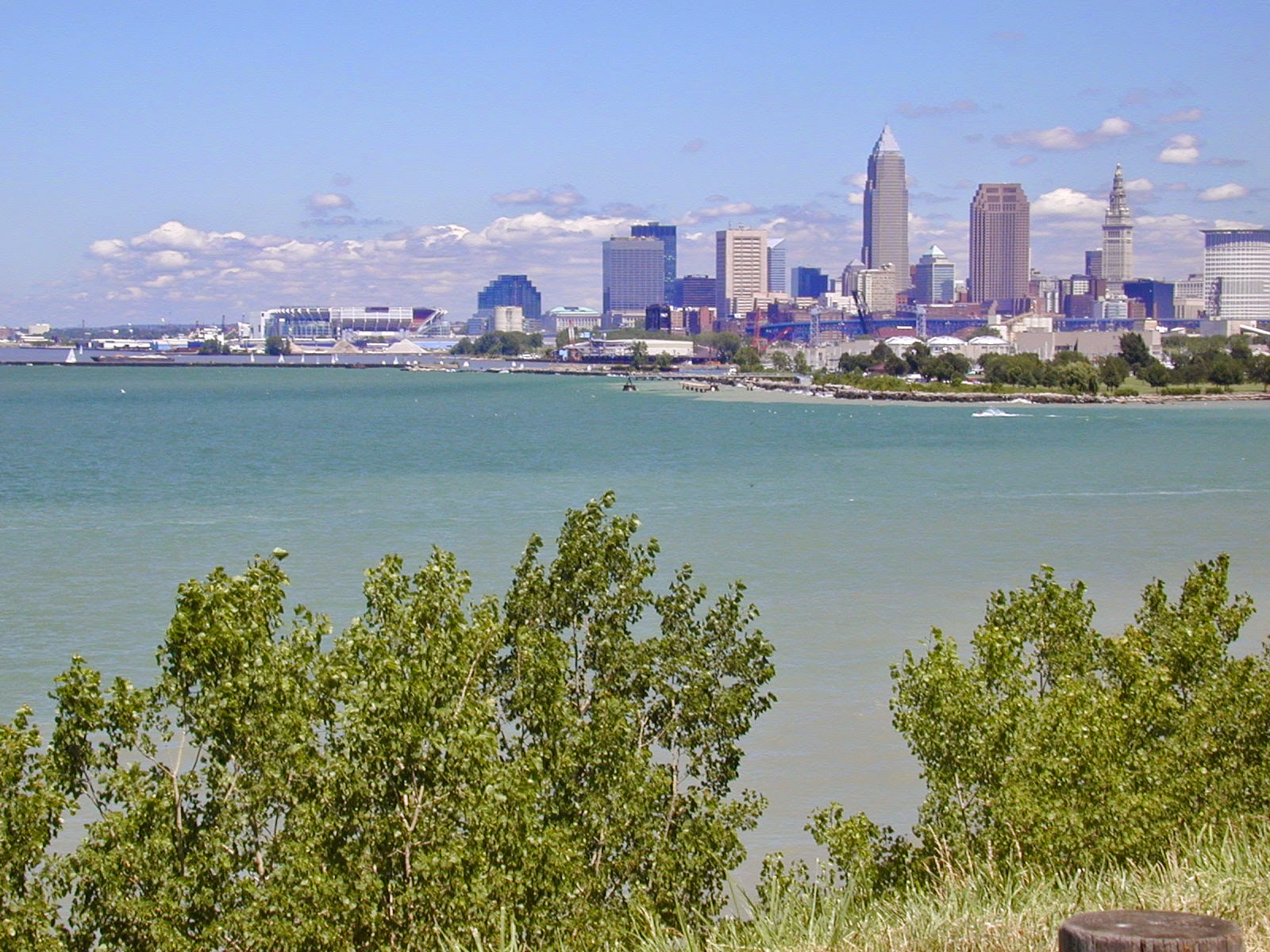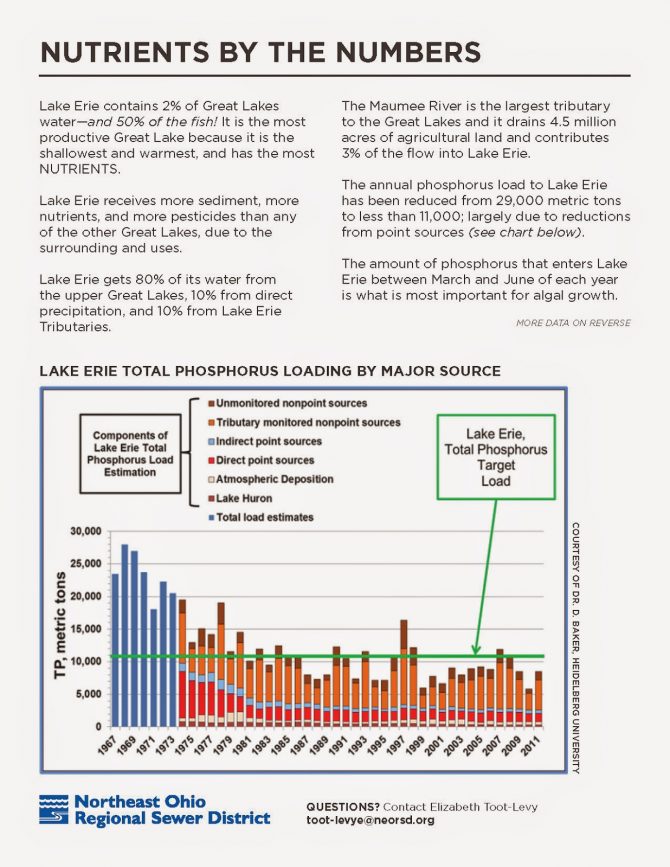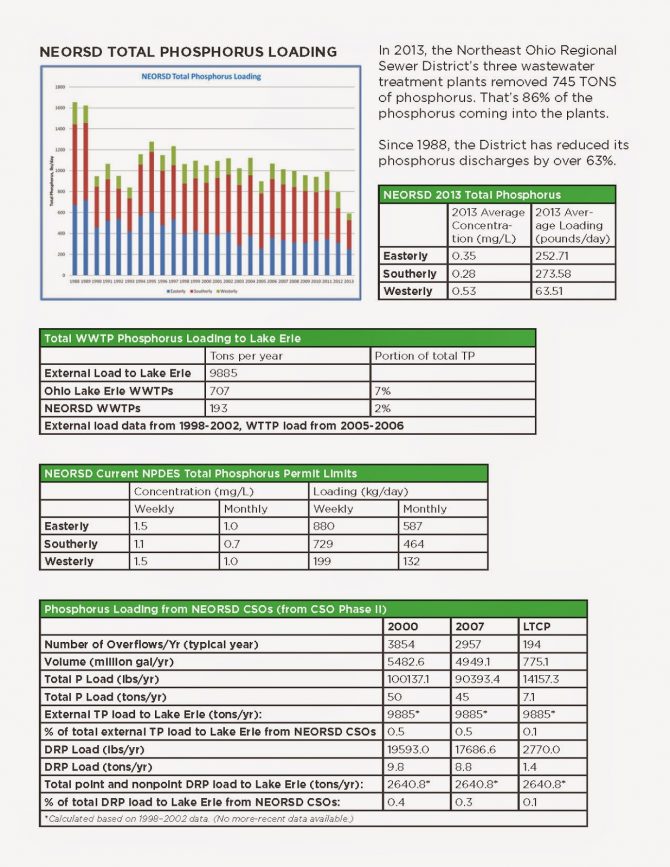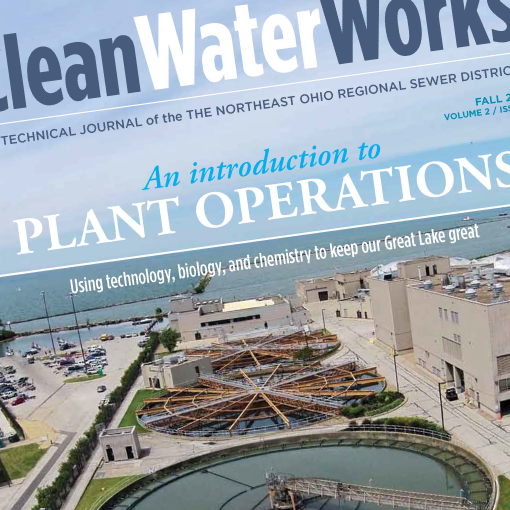
ENVIRONMENT: The facts about phosphorus, and why Lake Erie receives more nutrients than any other Great Lake
Posted by Jared Shepherd
- 25141 Views
- October 1st, 2014
- in Miscellaneous
- No Comments
Fact: Lake Erie contains 2% of the Great Lakes’ water—and 50% of their fish.
Great Lakes facts and figures underscore the reality that these water bodies are precious but fragile resources. Affected by many factors, the Sewer District and agencies like it constantly monitor Lake Erie and the streams replenishing it to ensure its health.
RELATED: This story is a Web Extra featured in our Clean Water Works technical journal (Fall 2014)
Nutrients are one contributor to Lake Erie’s well-being, with one particular nutrient—phosphorus—making news this season as toxic algae has threatened some parts of its western basin. Here are some phosphorus-specific facts and figures to help tell the story of nutrients and what affects their impact on our Great Lake.
- Lake Erie is the most productive Great Lake because it is the shallowest and warmest, and has the most nutrients.
- Lake Erie receives more sediment, more nutrients, and more pesticides than any of the other Great Lakes, due to the surrounding and uses.
- Lake Erie gets 80% of its water from the upper Great Lakes, 10% from direct precipitation, and 10% from Lake Erie Tributaries.
- The Maumee River is the largest tributary to the Great Lakes and it drains 4.5 million acres of agricultural land and contributes 3% of the flow into Lake Erie.
- The annual phosphorus load to Lake Erie has been reduced from 29,000 metric tons to less than 11,000; largely due to reductions from point sources.
- The amount of phosphorus that enters Lake Erie between March and June of each year is what is most important for algal growth.
Download: We offer a two-page “Nutrients by the numbers” download, a useful resource for education and perspective.





